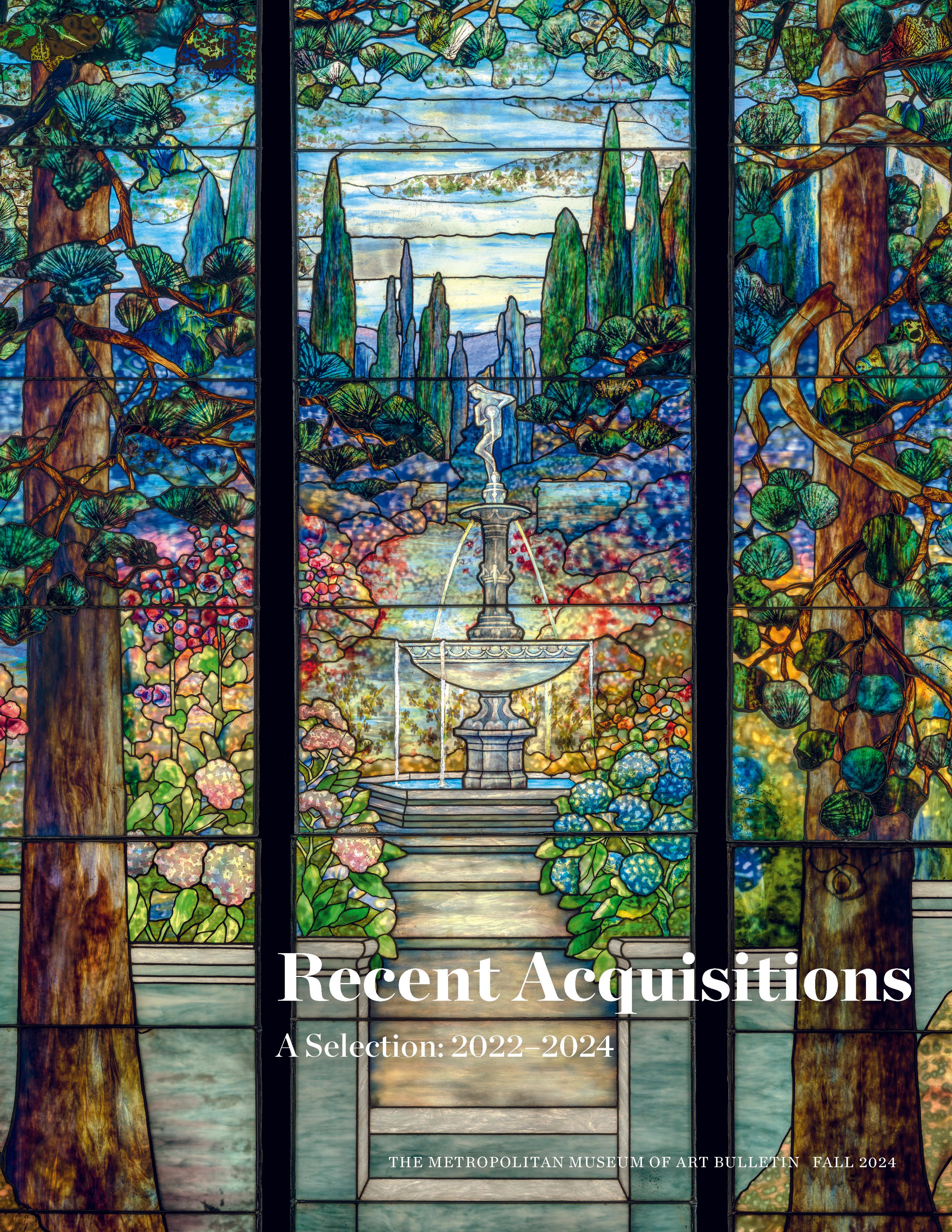Covered Vessel (Futamono) with Plum Tree
Invented in Japan in the Momoyama period, Oribe ware introduced vivid patterns and color to a ceramic tradition that had previously favored monochrome vessels. Oribe ceramics were used primarily for serving food and drinking tea, and their stylized, often abstract patterns with brown, black, or brilliant green glazes made them a dramatic addition to the oftentimes subdued dining trays and tearooms. A major technological advance in ceramics—the Motoyashiki multi-chamber climbing kiln, which allowed potters to melt glazes to shiny translucency—made this radically new appearance possible. The vocabulary of designs is encyclopedic, with subjects ranging over the entire field of possibilities: birds and flowers, human figures, landscapes, poetic inscriptions as well as auspicious and popular subjects. The combination of a multitude of sources and images reflects the confidence of the potters to rearrange older iconographies and create new styles. The Oribe type of Mino ware was produced especially to appeal to consumers in Kyoto, primarily to tea afficionados.
The lid of this dish is decorated in a modern-looking, two-tone style, called Green Oribe (Ao-oribe), which features green glaze on parts of the body and designs in iron on the remaining white areas. The bright green sections are complemented by brown iron stripes inspired by textiles, square patterns with tiny dots in their centers referencing shibori tie-dyeing, which was used on Momoyama period tsujigahana fabrics, and stylized motifs of decorative hangings. The ceramic is further enriched by small, impressed chrysanthemum patterns which were pressed into the clay along the rim. In the interior, deep pools of the thick copper green glaze were transformed into glossy, dark surfaces during firing as we can see along the left and bottom corners. In the center, the white clay slip is the ground for a painting of a stylized, flowering plum tree with a bird, most likely a warbler, possibly referencing the “First Song of the Year” (Hatsune) chapter of The Tale of Genji.
The lid of this dish is decorated in a modern-looking, two-tone style, called Green Oribe (Ao-oribe), which features green glaze on parts of the body and designs in iron on the remaining white areas. The bright green sections are complemented by brown iron stripes inspired by textiles, square patterns with tiny dots in their centers referencing shibori tie-dyeing, which was used on Momoyama period tsujigahana fabrics, and stylized motifs of decorative hangings. The ceramic is further enriched by small, impressed chrysanthemum patterns which were pressed into the clay along the rim. In the interior, deep pools of the thick copper green glaze were transformed into glossy, dark surfaces during firing as we can see along the left and bottom corners. In the center, the white clay slip is the ground for a painting of a stylized, flowering plum tree with a bird, most likely a warbler, possibly referencing the “First Song of the Year” (Hatsune) chapter of The Tale of Genji.
Artwork Details
- 青織部梅樹文木瓜形蓋物
- Title: Covered Vessel (Futamono) with Plum Tree
- Period: Momoyama period (1573–1615)
- Date: early 17th century
- Culture: Japan
- Medium: Stoneware with iron and copper green overglaze decoration (Mino ware, Oribe type)
- Dimensions: H. 5 5/16 in. (13.5 cm); W. 9 11/16 in. (24. 6 cm); D. 8 1/4 in. (21 cm)
- Classification: Ceramics
- Credit Line: Douglas Dillon Fund, 2023
- Object Number: 2023.731a, b
- Curatorial Department: Asian Art
More Artwork
Research Resources
The Met provides unparalleled resources for research and welcomes an international community of students and scholars. The Met's Open Access API is where creators and researchers can connect to the The Met collection. Open Access data and public domain images are available for unrestricted commercial and noncommercial use without permission or fee.
To request images under copyright and other restrictions, please use this Image Request form.
Feedback
We continue to research and examine historical and cultural context for objects in The Met collection. If you have comments or questions about this object record, please contact us using the form below. The Museum looks forward to receiving your comments.
